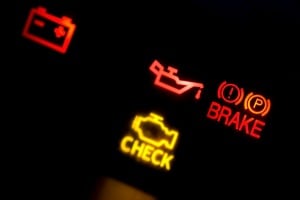Don't Just Turn It Off; Fix the Problem

When your car's "Check Engine" light comes on, it's usually accompanied by a sinking feeling in the pit of your stomach. The light could mean a costly problem, like a bad catalytic converter, or it could be something minor, like a loose gas cap. But in many cases, it means at minimum that you'll be visiting the car dealer to locate the malfunction and get the light turned off.
The Check Engine light — more formally known as the Malfunction Indicator Lamp (MIL) — is a signal from the car's engine computer that something is wrong. The car dealer's service department can diagnose the problem.
The Check Engine light can even be turned off by some code readers, even though this action alone does not actually repair the underlying problem. In many such cases the light will simply come back on later.
Experts say that many drivers confuse the "service required" light on the gauge cluster for the Check Engine light. These warning lights are unrelated. The service required light just means the car is due for an oil change or other routine maintenance. It is not the indicator of trouble that the Check Engine light is.
Check Engine lights come in orange, yellow or amber, depending on the manufacturer. If the light begins flashing, however, it indicates a more serious problem, such as a misfire that can quickly overheat the catalytic converter. These emissions devices operate at high temperatures to cut emissions, but can pose a fire hazard if faulty.
Don't Ignore That Light
So if the Check Engine light comes on and it's steady rather than flashing, what do you do? The most obvious answer, of course, is to get the engine checked. But many people do nothing, perhaps fearing an expensive repair bill. Some drivers with older cars want to squeeze out as many remaining miles as possible without visiting a service garage. But before they can pass their state's vehicle inspection, they have to get the light turned off. And a state inspection is a good motivator for dealing with the problem. If the light is lit, there's a good chance the car is releasing excess pollutants or consuming too much gas.
Ten percent of all cars on the road have a Check Engine light on, and the drivers of half of these cars have ignored the light for more than three months, says Kristin Brocoff, a spokesperson for CarMD.com.
Courtesy of Edmunds

No comments:
Post a Comment